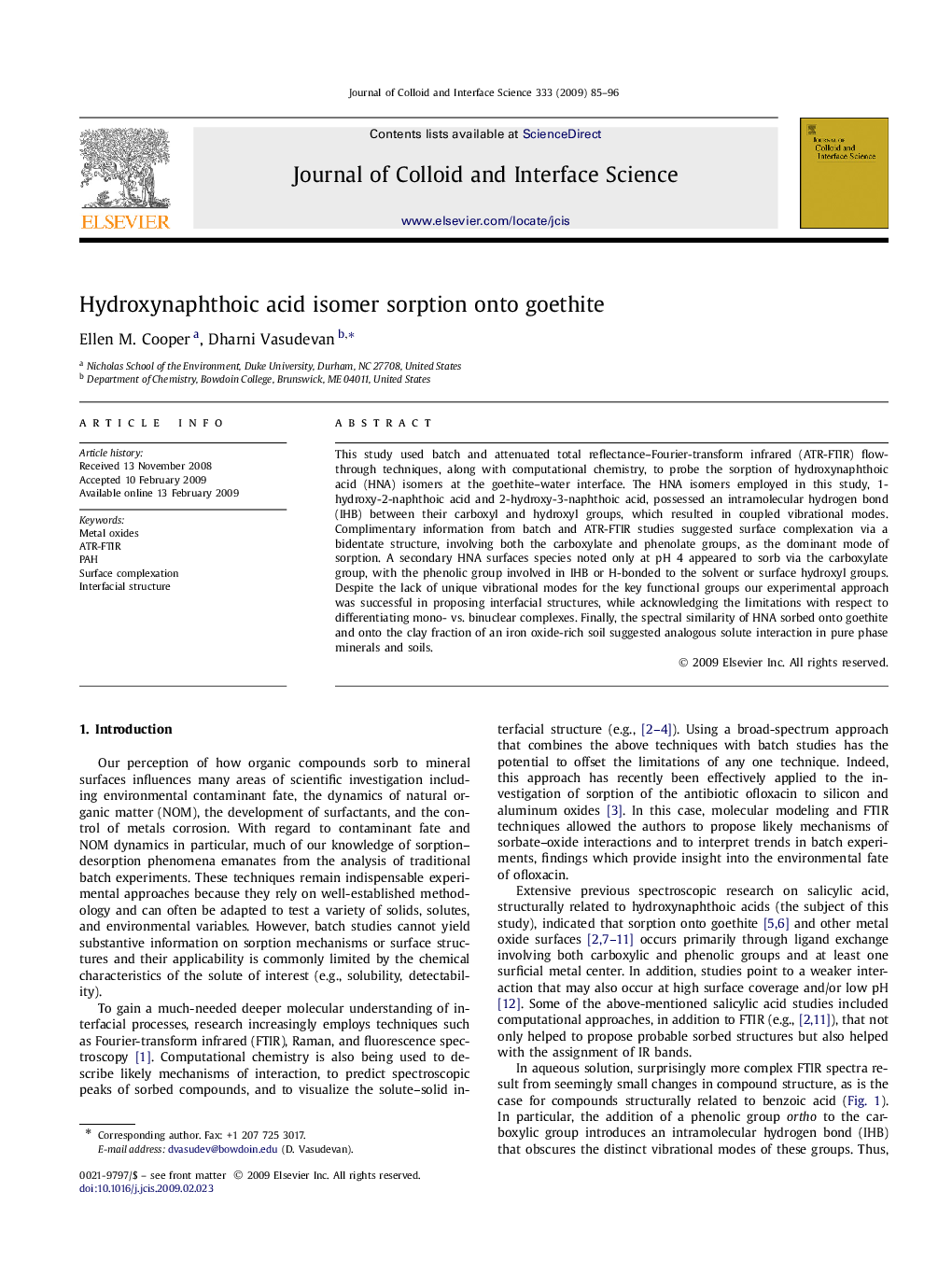| Article ID | Journal | Published Year | Pages | File Type |
|---|---|---|---|---|
| 610951 | Journal of Colloid and Interface Science | 2009 | 12 Pages |
This study used batch and attenuated total reflectance–Fourier-transform infrared (ATR-FTIR) flow-through techniques, along with computational chemistry, to probe the sorption of hydroxynaphthoic acid (HNA) isomers at the goethite–water interface. The HNA isomers employed in this study, 1-hydroxy-2-naphthoic acid and 2-hydroxy-3-naphthoic acid, possessed an intramolecular hydrogen bond (IHB) between their carboxyl and hydroxyl groups, which resulted in coupled vibrational modes. Complimentary information from batch and ATR-FTIR studies suggested surface complexation via a bidentate structure, involving both the carboxylate and phenolate groups, as the dominant mode of sorption. A secondary HNA surfaces species noted only at pH 4 appeared to sorb via the carboxylate group, with the phenolic group involved in IHB or H-bonded to the solvent or surface hydroxyl groups. Despite the lack of unique vibrational modes for the key functional groups our experimental approach was successful in proposing interfacial structures, while acknowledging the limitations with respect to differentiating mono- vs. binuclear complexes. Finally, the spectral similarity of HNA sorbed onto goethite and onto the clay fraction of an iron oxide-rich soil suggested analogous solute interaction in pure phase minerals and soils.
Graphical abstractHydroxynaphthoic acid isomers sorb at goethite–water interface via the ortho substituted carboxylate and phenolate groups and form either bidendate–mononuclear or bidendate–binuclear complexes.Figure optionsDownload full-size imageDownload as PowerPoint slide
